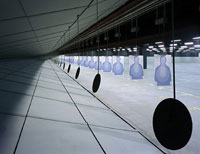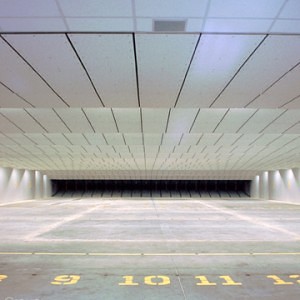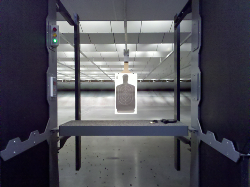Choosing a bullet trap is an important decision that will directly impact a range’s profits. However, it is a decision that often seems overwhelming given the number of options available. To truly understand how important a bullet trap is to range operations and budget, it is helpful to think of the range as a large lead processor and to answer the following eight questions:
- Will the range be limited to handguns only, or will rifles be allowed?
- What other kinds of ammunition will be used?
- How many rounds will be fired each month? Each year?
- How do you plan to collect the lead from the trap?
- What about lead dust and other airborne particles?
- What kind of budget are you working with?
- Are there any size limitations?
- What about local fire codes and other restrictions?
Once these questions are answered, it becomes much easier to choose the optimal bullet trap that aligns with the range’s goals. Luckily for range owners, Action Target provides different bullet trap choices that cater to the many possible range uses. The two most common options for commercial range use are the Total Containment Trap (TCT) and the Rubber Berm Trap (RBT). Each has obvious benefits for any range, but the difference still depends on the use of each range and the answers to the above questions.
For example, if the range’s business plan calls for a small, low-use facility, then the Rubber Berm Trap is a great option. The RBT requires a smaller footprint than the Total Containment Trap and uses a smaller amount of floor space. It takes advantage of a hassle-free design that requires very little upkeep. It utilizes the practical and beneficial properties of rubber, while eliminating weaknesses and unnecessary elements of other designs. The RBT can also be serviced from the front, whereas the TCT must be serviced from the rear. The bottom line—The Rubber Berm Trap is cheaper to build and easier to maintain.
However, if the range has a high-volume, heavy-use facility, then the Rubber Berm Trap will quickly become a frustration and a large expense. In these types of ranges, the Total Containment Trap is the optimal choice.
 The Total Containment Trap is the dominant industry standard for modern, heavy-duty, steel bullet traps. It is the superior choice for ranges where safety, reliability, simple maintenance, and ease of use are top priorities. The TCT can be used both indoors and outdoors in all types of law enforcement, military, and commercial shooting ranges. The TCT funnels fired rounds into a deceleration chamber, which increases safety for everyone on the range. Action Target’s patented Dust Collection Unit can be installed in the Total Containment Trap, protecting the range from lead dust contamination. The bottom line: Although more expensive than the Rubber Berm Trap, the Total Containment Trap is longer lasting and better for high-use ranges.
The Total Containment Trap is the dominant industry standard for modern, heavy-duty, steel bullet traps. It is the superior choice for ranges where safety, reliability, simple maintenance, and ease of use are top priorities. The TCT can be used both indoors and outdoors in all types of law enforcement, military, and commercial shooting ranges. The TCT funnels fired rounds into a deceleration chamber, which increases safety for everyone on the range. Action Target’s patented Dust Collection Unit can be installed in the Total Containment Trap, protecting the range from lead dust contamination. The bottom line: Although more expensive than the Rubber Berm Trap, the Total Containment Trap is longer lasting and better for high-use ranges.
Before deciding on a trap, it is imperative to understand exactly what the requirements are to find the trap that supports the range goals. In today’s industry, too many owners are initially enticed by a low price only to be disappointed in the end due to the amount of unforeseen problems. For more information, Action Target has provided multiple whitepapers and a video to help choose the optimal bullet trap—visit the “Related Pages” section of our Bullet Traps page to access these resources.







 Rental or lease programs are realistic possibilities, allowing for more informed decisions to be made. A singular offering like an on-site range provides a service unavailable elsewhere, meaning you are selling not only the firearms, but also a rare service–your expertise.
Rental or lease programs are realistic possibilities, allowing for more informed decisions to be made. A singular offering like an on-site range provides a service unavailable elsewhere, meaning you are selling not only the firearms, but also a rare service–your expertise. The value of simplicity, then, is clearly demonstrated. On a typical commercial range, there is no need for fancy, high-end target retrieval systems. The most cost-effective system on a range is a simple
The value of simplicity, then, is clearly demonstrated. On a typical commercial range, there is no need for fancy, high-end target retrieval systems. The most cost-effective system on a range is a simple